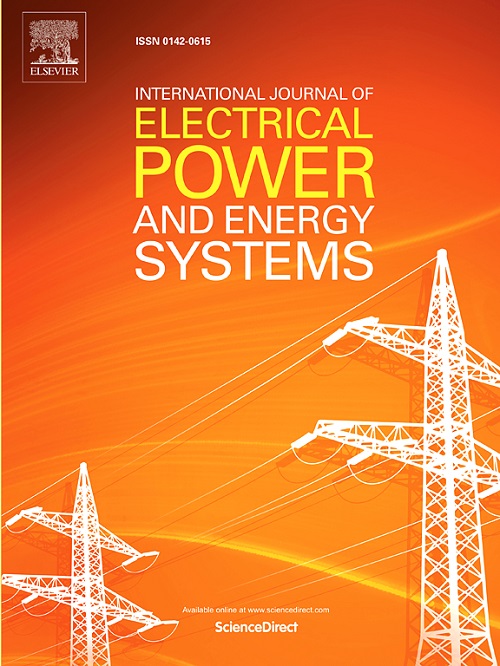Fault detection and classification of bipolar DC system with dedicated metallic return based on TF-ENSR
IF 5
2区 工程技术
Q1 ENGINEERING, ELECTRICAL & ELECTRONIC
International Journal of Electrical Power & Energy Systems
Pub Date : 2025-03-01
DOI:10.1016/j.ijepes.2025.110574
引用次数: 0
Abstract
Fast and accurate fault diagnosis is necessary for continuous power delivery. In bipolar DC systems with dedicated metallic return (DMR), accurately distinguishing between pole-to-ground and pole-to-DMR faults is challenging. To address this, this paper proposes a data-driven protection method based on feature learning. Specifically, time-series feature extraction based on scalable hypothesis tests (Tsfresh) is utilized to automatically extract the feature set with clear physical interpretations from fault voltage signals. To ensure that the feature set is sufficiently concise while fully describing the fault state, the Feature-selector is integrated to efficiently eliminate redundant features. Additionally, an improved elastic network softmax regression (ENSR) model is employed to establish an accurate mapping between the selected features and fault types. Offline simulations in PSCAD/EMTDC and hardware-in-the-loop testing with real-time digital simulators (RTDS) demonstrate that the proposed method effectively detects and distinguishes between fault types. Comparative studies with other protection methods highlight the advantages of the proposed approach, including its robustness to high transition resistances and strong noise interference, adaptability to changes in sampling environments and current-limiting reactors, and low online computational burden.
求助全文
约1分钟内获得全文
求助全文
来源期刊
CiteScore
12.10
自引率
17.30%
发文量
1022
审稿时长
51 days
期刊介绍:
The journal covers theoretical developments in electrical power and energy systems and their applications. The coverage embraces: generation and network planning; reliability; long and short term operation; expert systems; neural networks; object oriented systems; system control centres; database and information systems; stock and parameter estimation; system security and adequacy; network theory, modelling and computation; small and large system dynamics; dynamic model identification; on-line control including load and switching control; protection; distribution systems; energy economics; impact of non-conventional systems; and man-machine interfaces.
As well as original research papers, the journal publishes short contributions, book reviews and conference reports. All papers are peer-reviewed by at least two referees.

 求助内容:
求助内容: 应助结果提醒方式:
应助结果提醒方式:


